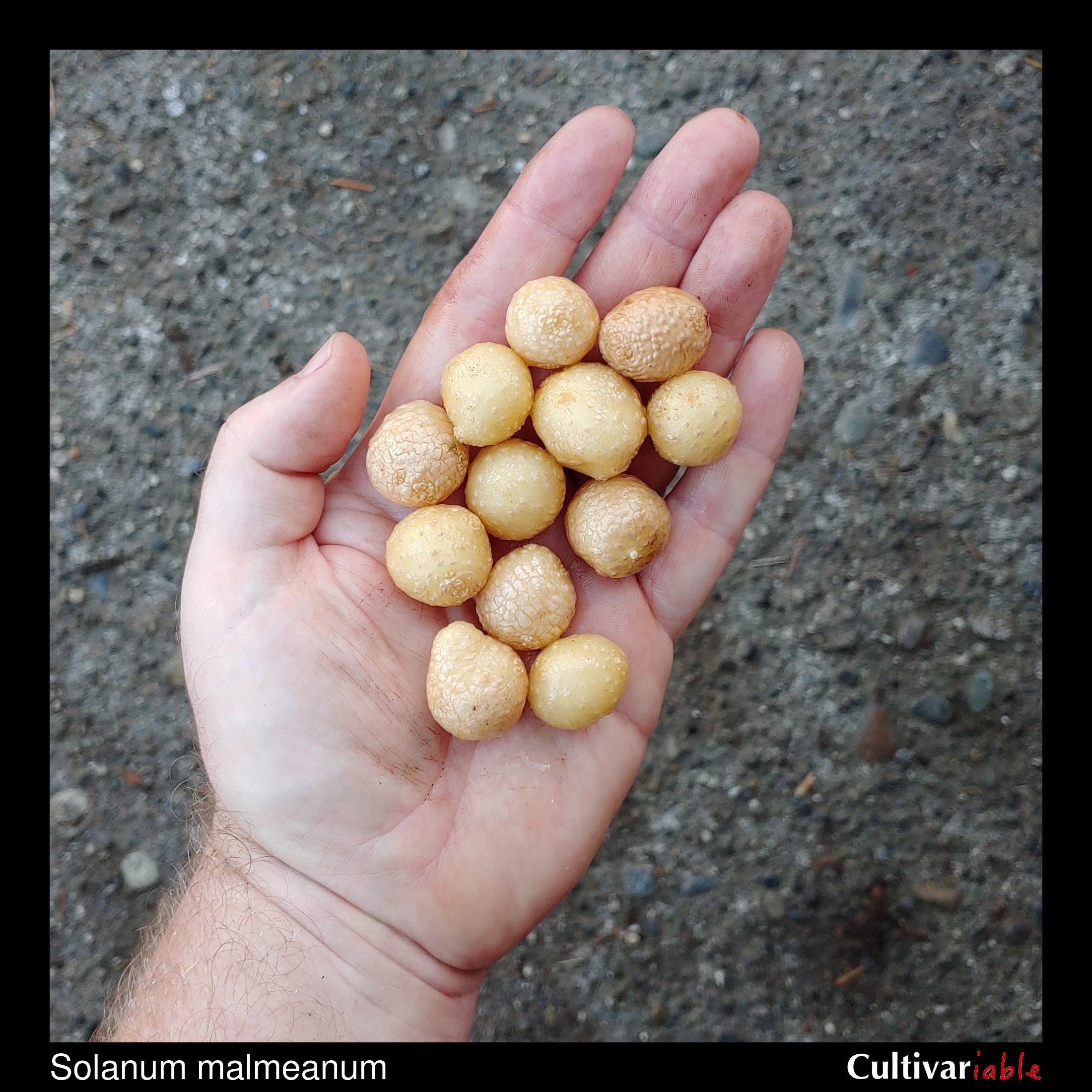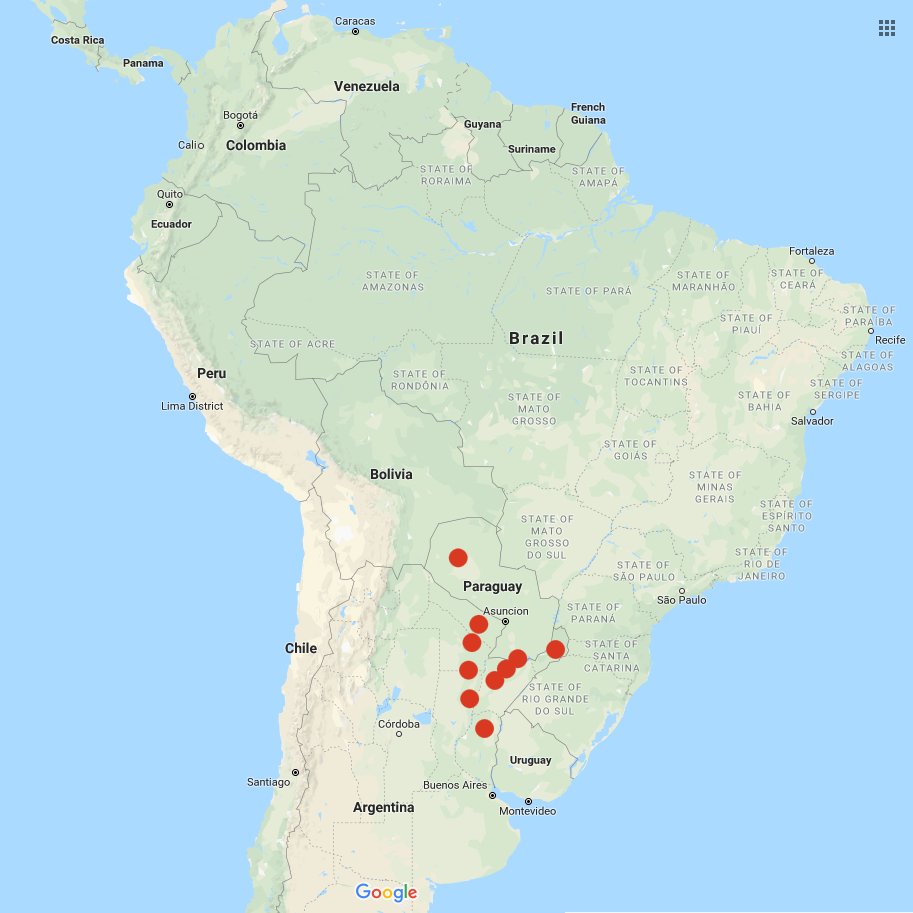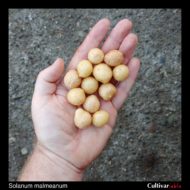Solanum malmeanum

| Common Names | |
| Code | mlm |
| Synonyms | S. commersoni subsp. malmeanum, S. millanii |
| Clade | Unknown |
| Series | Commersoniana |
| Ploidy | Diploid (2x), Triploid (3x) |
| EBN | 1 |
| Tuberization Photoperiod | Unknown |
| Self-compatibility | Unknown |
| Nuclear Genome | Unknown |
| Cytoplasmic Genome | Unknown |
| Citation | Bitter: Repert. Spec. Nov. Regni Veg. 12: 447. 1913. |
Description

Solanum malmeanum is a wild potato from Argentina, Brazil, Paraguay, and Uruguay. Very little has been written about this species, due in part to the fact that it was long classified as a subspecies of S. commersonii. It is very similar to S. commersonii and the most easily observable difference is that it the flowers do not develop blue coloring on the outside and the leaves tend to be longer. The plants are otherwise hard to distinguish and it has been suggested that there may be hybrids between S. commersonii and S. malmeanum that would further confuse identification.
The specific epithet, malmeanum, means “bad smelling,” presumably referring to the odor of the foliage, which, I have to admit, I don’t find very distinctive. It is formed from the Latin words “malus,” for “bad,” and “olfacere,” for “to smell.” While there is no completely standardized pronunciation for scientific names, the most common way to pronounce this species is probably so-LAY-num mal-mee-AHN-um.
As is true of most of the southern species, Solanum malmeanum is a lowland species, growing near to sea level. Its native habitat includes wet, shady, and grassy places up to about the 1000 foot (300 m) elevation and growth and flowering occurs mostly during the winter (Hawkes 1969).
Etymology
Malmeanum is an honorific, referring to Swedish botanist Oskar Andersson Gustaf Malme.
Resistances
The plants that I have grown appeared to be very frost resistant, surviving frosts that killed domesticated potatoes with no damage.
| Condition | Type | Level of Resistance | Source |
|---|---|---|---|
Glykoalkaloid content
Tubers of the one accession that I have grown were mostly strongly bitter, with a few plants that produced only mildly bitter tubers. I’m not aware of any published information about glycoalkaloid content in this species. The closely related species, Solanum commersonii, has a different glycoalkaloid profile than domesticated potatoes, containing commersonine and demissine rather than solanine and chaconine. That seems likely to be true of this species as well. I don’t know if those glycoalkaloids produce an equivalent sensation of bitterness.
Images
 |
|||
Cultivation
I have found this species difficult to germinate. It might require conditions different than the standard for S. tuberosum. As is often the case, my saved seeds germinated much better than the genebank accessions that I started with, so this may just be a matter of seed age. Seed count per berry was pretty low, averaging 19. I have observed a similarly low seed count in S. commersonii. Perhaps the small flowers of these species are not as attractive to our local pollinators or perhaps there is an insufficient number of S alleles in our starting population.
Breeding
Crosses with S. tuberosum
| Female | Male | Berry Set | Seed Set | Germination | Ploidy | Source |
Crosses with other species
| Female | Male | Berry Set | Seed Set | Germination | Ploidy | Source |
| S. malmeanum | S. chacoense | Minimal | Minimal | Yes | Hawkes 1969 |
